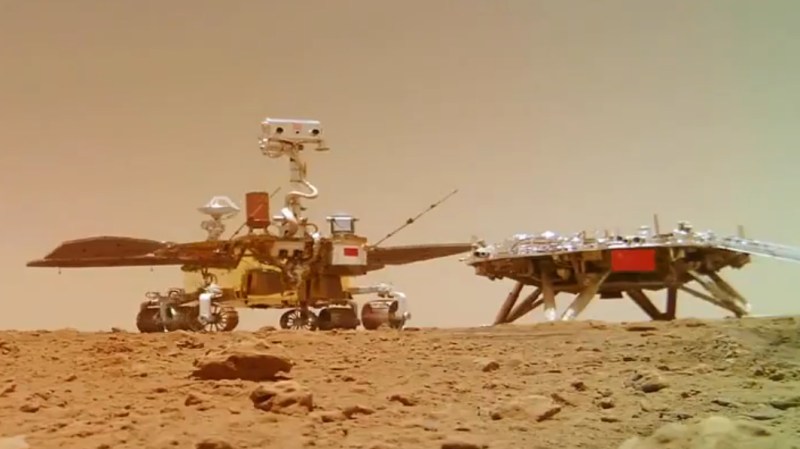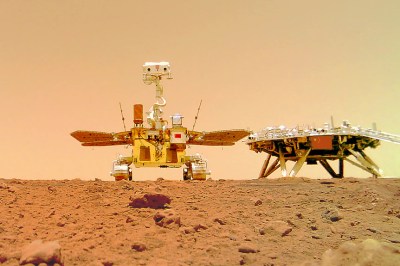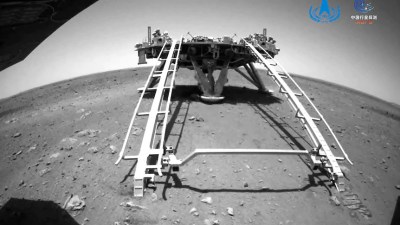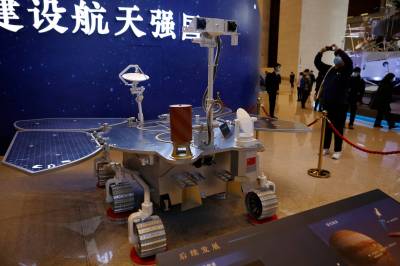China’s Mars Rover Goes Exploring

China’s space program has big goals and is already starting to achieve them. Recently, the China National Space Administration has landed its first rover on Mars, and begun to explore the surface of the red planet.
It’s a huge step, and something only previously achieved successfully by NASA. Let’s take a look at the Chinese project, its goals, and see how it compares to the American rovers that have also roamed so far away.
Wheelin’ on Mars

China’s first Mars rover goes by the name of Zhurong, named after a figure in Chinese mythology that is typically associated with fire. Given that Mars is known as the “Planet of Fire” in China, it’s a fitting name selected by a public vote held earlier this year.
The rover comes in at a size of 2.6 meters long, 3 meters wide, and 1.85 meters high, with its size placing it in between NASA’s Mars Exploration Rovers which landed in 2004, and the later Curiosity rover which is a touch larger. The Zhurong rover weighs 240 kilograms, again placing it in between the two recent generations of NASA Mars rovers.
Zhurong was launched as part of the Tianwen-1 mission which launched on July 23, 2020. The spacecraft entered Martian orbit on February 10, 2021, with the lander touching down on 14 May 2021 in the Utopia Planitia. The area on Mars was chosen as an ideal spot to investigate the possibility of the planet being host to an ancient ocean. The descent was controlled by parachutes and retro-rockets which slowed the lander as it approached the surface.
What Lies Beneath

The rover sports a sensor package designed to perform a variety of science missions. Chief among those is the ground-penetrating radar, designed to collect geological data and capable of imaging up to 100 meters below the Martian surface. This goes far deeper than the 10 meter depth capability of the instrument fitted to the Perseverance rover which landed earlier this year. There’s also a magnetometer onboard for determining the finer details of Mars’s magnetic field.
Atmospheric data is captured by measuring temperature, pressure, wind velocity and direction in the Martian atmosphere. There’s also a microphone which captures sound, which tends to have a different quality to that on Earth due to the different atmospheric conditions.
Analysis and Imaging Hardware
Similarly to other rovers, a laser-induced breakdown spectroscopy instrument is included. For those who aren’t deeply involved in the spectroscopy subculture, this is a device which blasts rock and other samples with a laser and measures the emitted light. This can be used to determine the chemical makeup of samples.

Camera-wise, a multi-spectral camera is fitted which aims to research the details around the existence of water on Mars. There are also extra cameras specifically intended for navigational purposes and for mapping out the topography of the surrounding area. These are key to the rover’s mission, as communication time delays from Earth to Mars make direct teleoperation of the rover impossible. Cameras are instead used to enable the rover to take some level of autonomy in getting around its immediate area.
Some of the rover’s science hardware is eclipsed by that present on Perseverance, such as the fancier spectrometers on board, but overall it’s a very complete science package. Zhurong’s primary goals of studying Martian geology and soil, as well as the atmosphere, should reveal useful insights into the makeup of Mars as well as its history.
One unique feature of the rover is its active suspension system. Unlike the passive rocker-bogie suspension system used on NASA rovers, Zhurong has fully independent control of each wheel’s suspension. It can adjust the weight placed on each wheel, which could be particularly useful if the rover finds itself encountering softer soils, and could also assist in navigating obstacles or steeper slopes.
The Mission Thus Far
China has recently released images of the rover on Mars, taken by a selfie camera that was dropped for that very purpose. The images document Zhurong rolling away from the camera as it begins to explore its landing site. Thus far, the rover has spent over a month on Mars, and has travelled 236 meters since landing. It is expected to spend 90 days studying the Martian surface, though it’s common for rover missions to be extended if the hardware continues functioning past the original timeline. As an example, NASA’s Opportunity rover ended up exploring the planet for 14 years despite originally being intended to operate for just 90 days.
The video released of the rover and its lander don’t show a lot of action yet, but we look forward to more images and more science coming out of the project. More rovers on Mars can only mean more learning, though we’re a touch disappointed that thus far, they’ve all landed far apart and don’t get to hang out. Perhaps one day, two rovers will meet; for now, with only six on the Martian surface, that’s likely quite some time away!
from Blog – Hackaday https://ift.tt/3qDAsLe
Comments
Post a Comment